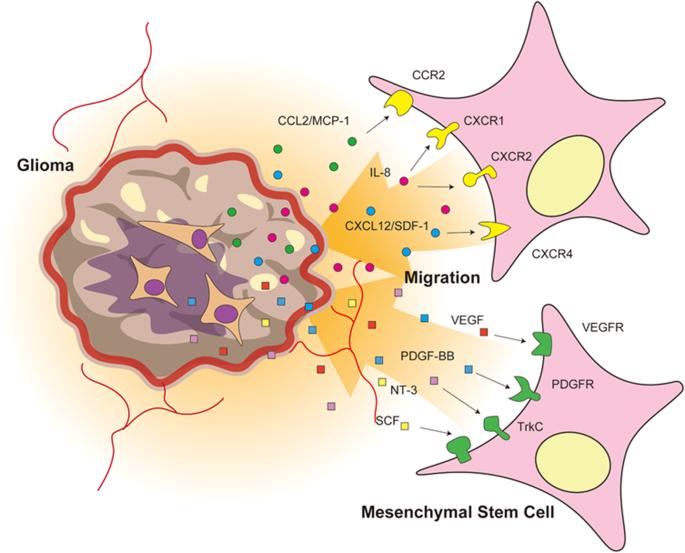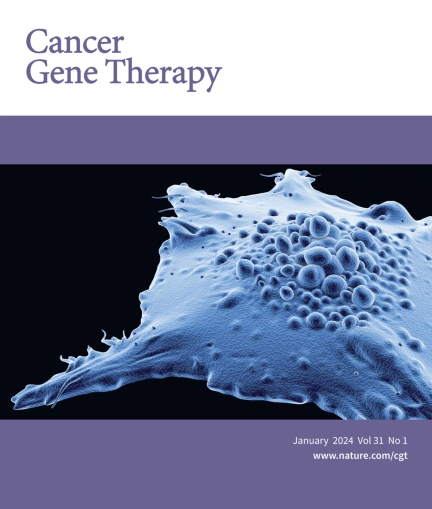Mesenchymal stem cells as therapeutic vehicles for glioma
IF 4.8
3区 医学
Q1 BIOTECHNOLOGY & APPLIED MICROBIOLOGY
引用次数: 0
Abstract
Glioma is a disease with a poor prognosis despite the availability of multimodality treatments, and the development of novel therapies is urgently needed. Challenges in glioma treatment include the difficulty for drugs to cross the blood–brain barrier when administered systemically and poor drug diffusion when administered locally. Mesenchymal stem cells exhibit advantages for glioma therapy because of their ability to pass through the blood–brain barrier and migrate to tumor cells and their tolerance to the immune system. Therefore, mesenchymal stem cells have been explored as vehicles for various therapeutic agents for glioma treatment. Mesenchymal stem cells loaded with chemotherapeutic drugs show improved penetration and tumor accumulation. For gene therapy, mesenchymal stem cells can be used as vehicles for suicide genes, the so-called gene-directed enzyme prodrug therapy. Mesenchymal stem cell-based oncolytic viral therapies have been attempted in recent years to enhance the efficacy of infection against the tumor, viral replication, and distribution of viral particles. Many uncertainties remain regarding the function and behavior of mesenchymal stem cells in gliomas. However, strategies to increase mesenchymal stem cell migration to gliomas may improve the delivery of therapeutic agents and enhance their anti-tumor effects, representing promising potential for patient treatment.


间充质干细胞作为胶质瘤的治疗工具。
胶质瘤是一种预后不良的疾病,尽管目前已有多模式疗法,但仍迫切需要开发新型疗法。胶质瘤治疗面临的挑战包括:全身用药时药物难以穿过血脑屏障,局部用药时药物扩散性差。间充质干细胞具有通过血脑屏障并迁移到肿瘤细胞的能力以及对免疫系统的耐受性,因此在治疗胶质瘤方面具有优势。因此,间充质干细胞已被探索用作各种治疗胶质瘤药物的载体。含有化疗药物的间充质干细胞显示出更好的渗透性和肿瘤蓄积性。在基因治疗方面,间充质干细胞可用作自杀基因的载体,即所谓的基因导向酶原药疗法。近年来,人们尝试了基于间充质干细胞的溶瘤病毒疗法,以提高对肿瘤的感染效果、病毒复制和病毒颗粒的分布。间充质干细胞在胶质瘤中的功能和行为仍存在许多不确定性。然而,增加间充质干细胞向胶质瘤迁移的策略可改善治疗药物的输送,增强其抗肿瘤效果,为患者治疗带来了巨大潜力。
本文章由计算机程序翻译,如有差异,请以英文原文为准。
求助全文
约1分钟内获得全文
求助全文
来源期刊

Cancer gene therapy
医学-生物工程与应用微生物
CiteScore
10.20
自引率
0.00%
发文量
150
审稿时长
4-8 weeks
期刊介绍:
Cancer Gene Therapy is the essential gene and cellular therapy resource for cancer researchers and clinicians, keeping readers up to date with the latest developments in gene and cellular therapies for cancer. The journal publishes original laboratory and clinical research papers, case reports and review articles. Publication topics include RNAi approaches, drug resistance, hematopoietic progenitor cell gene transfer, cancer stem cells, cellular therapies, homologous recombination, ribozyme technology, antisense technology, tumor immunotherapy and tumor suppressors, translational research, cancer therapy, gene delivery systems (viral and non-viral), anti-gene therapy (antisense, siRNA & ribozymes), apoptosis; mechanisms and therapies, vaccine development, immunology and immunotherapy, DNA synthesis and repair.
Cancer Gene Therapy publishes the results of laboratory investigations, preclinical studies, and clinical trials in the field of gene transfer/gene therapy and cellular therapies as applied to cancer research. Types of articles published include original research articles; case reports; brief communications; review articles in the main fields of drug resistance/sensitivity, gene therapy, cellular therapy, tumor suppressor and anti-oncogene therapy, cytokine/tumor immunotherapy, etc.; industry perspectives; and letters to the editor.
 求助内容:
求助内容: 应助结果提醒方式:
应助结果提醒方式:


